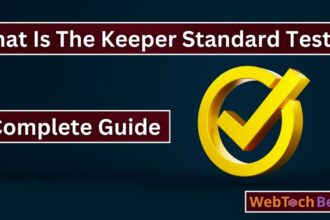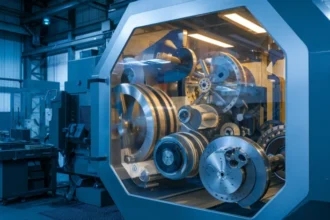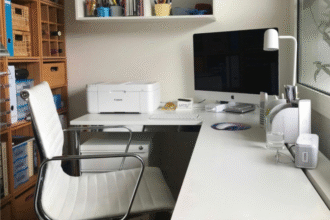Ever start a project thinking you had it all figured out, only to find out halfway through that the timeline’s blown, the budget’s stretched thin, and your client is wondering where things went sideways? Yeah, you’re not alone. Accurate project estimation feels like a superpower in the business world. Nail it, and you keep your projects on track, your clients happy, and your profits healthy. Miss it, and suddenly, you’re juggling unhappy clients, frustrated teams, and shrinking margins.
But here’s the thing: project estimation doesn’t have to be a guessing game. With a few smart workflow tweaks, you can get way better at it, and the best part? You don’t need to be a math genius or have a crystal ball. You just need to work smarter.
So, ready to sharpen your estimating skills and protect your bottom line? Let’s dive into five simple, practical workflow hacks that’ll make your project estimates more accurate and your business more profitable.
1. Break Projects Into Clear, Detailed Components
Imagine trying to guess how long it takes to build a house by just looking at the finished product. Sounds impossible, right? The same goes for projects. If you don’t break them down, you’ll miss critical pieces, and your estimate will be off.
The secret sauce? Get super detailed. Split your project into bite-sized chunks. Instead of estimating the “design phase” as a whole, list out all the parts: wireframes, mockups, revisions, client feedback sessions, and so on. When you break it down, it’s easier to spot missing tasks, figure out who’s responsible for what, and assign realistic timeframes.
Plus, this detailed approach helps you spot potential risks early. That tricky feature your client wants? Now it’s a task on your list, not a surprise halfway through. And when you communicate this level of detail to your clients, they get a clearer picture of what they’re paying for. Win-win.
2. Standardize Your Estimates with Consistent Templates
Finally, let’s talk about consistency. How many times have you started an estimate from scratch, formatting, wording, and pricing everything differently each time? It’s a time drain and invites errors.
That’s where using standardized project estimate templates can be a game changer because they help you keep estimates clear, professional, and consistent, no matter who creates them or what the project is. They also save time, you’re not reinventing the wheel every single time.
These templates guide you to include all the necessary details: task breakdowns, costs, timelines, terms, and more. Plus, they make it easier to compare estimates across projects and spot anomalies.
If you haven’t tried using templates yet, it’s worth exploring some ready-made options that you can customize to fit your style and business needs. It’s a small change with big impact.
So next time you get a project brief, grab a pen (or your favorite project management app) and start slicing it up. Trust me, this alone can save you tons of headaches.
3. Review Past Projects to Learn What Worked (and What Didn’t)
Ever feel like you’re reinventing the wheel every time you start a new project? Been there. One of the fastest ways to improve your estimates is to learn from your own history.
Keep track of your past projects: what you estimated versus what it actually took in time and cost. Sounds tedious, but it’s pure gold. Over time, patterns emerge. Maybe you consistently underestimate the testing phase or forget to budget for client revisions. Once you spot these trends, you can adjust your future estimates accordingly.
If you don’t have a formal way to track this, start small. Keep a simple spreadsheet or notes in your project files. When a project wraps, jot down where the estimate missed the mark and why. Was a task underestimated? Did unexpected client feedback add more work?
You might be surprised how much better your estimates get just by reviewing past work. It’s like having a cheat sheet tailored to your business. Why guess when you can learn?
4. Get Team Input Early to Avoid Overlooked Details
Think you can estimate everything on your own? Think again. Your team members are the folks actually doing the work, they see the complexities, the challenges, and the little details that might slip past you.
Getting your team involved early in the estimation process isn’t just about sharing the workload. It’s about catching blind spots and tapping into real-world experience. When designers, developers, or specialists chime in, you get a fuller picture of what’s involved.
And here’s a bonus: involving your team builds buy-in. When people feel heard and see their input reflected in the plan, they’re more invested in the project’s success.
So, don’t just guess or assume. Set up estimation meetings or quick review sessions where your team can weigh in. It might add a little time upfront, but it saves you from costly surprises later.
5. Add a Thoughtful Buffer to Account for the Unexpected
Here’s a question for you: When was the last time a project went 100% exactly as planned? If your answer is “never,” you’re not alone.
Projects are messy. There will always be changes, unexpected roadblocks, or client requests that weren’t in the original scope. That’s why every good estimate needs a buffer—a little extra time or budget set aside to cover surprises.
But beware: this isn’t an excuse to pad estimates wildly. The buffer should be reasonable—typically around 10-15%, depending on the project’s complexity. It’s about smart risk management, not inflated pricing.
And remember, transparency counts. Clients appreciate when you’re upfront about this buffer, explaining it’s there to keep the project on track despite inevitable bumps in the road. Framing it as a smart safety net builds trust.
Wrapping It Up: Estimation Doesn’t Have to Be Stressful
There you have it, five practical workflow hacks to improve your project estimation accuracy and boost your profitability. By breaking projects into detailed tasks, learning from past jobs, involving your team, adding a smart buffer, and using consistent templates, you’ll reduce surprises and build stronger client relationships.
Now, what’s one small tweak you can try right now? Maybe it’s starting your next estimate with a detailed task list or gathering your team for an estimation pow-wow. Whatever it is, taking action is what moves the needle.
Remember: better estimates mean better projects. And better projects mean a healthier business, and a happier you.

















